From mountain peaks to cowboy-style eats to fun for the whole family, it’s no secret that Wyoming is one of the top getaway destinations in warm weather months. However, real travel insiders know that crisp snowfall and year-round activities make the state one of the best winter vacations in the US.
While colder temperatures highlight another side of the natural beauty you’ll find here, being mindful of rough terrain and bitter cold is essential to preparing for your trip properly. Here is a rundown of what you need to know to stay safe and have a blast in Wyoming this winter.
What to Do in Winter
Weaving Old West heritage with the excitement of the modern day, there’s something for everyone in Wyoming in the winter. Outdoor sports enthusiasts will find no shortage of options to get their adrenaline pumping; nature lovers can take in the serene scenery at snow-capped national parks, and open-air festivals and hands-on museums make the Cowboy State a top family vacation destination in the winter.
Wondering where to find some of Wyoming’s best winter activities and events? This list can help you make the most of your next cold-weather escape.
Wyoming’s Top Winter Activities & Where to Find Them:
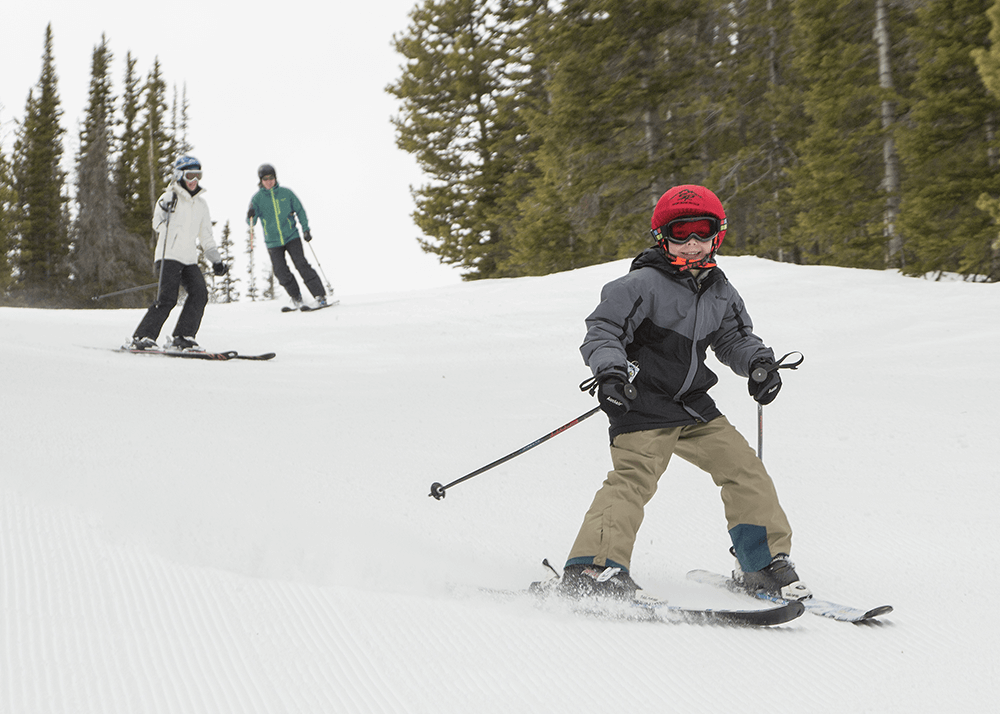
- Skiing. Skiing is always a popular winter activity in Jackson, Cody and Casper.
- Snowmobiling. Wyoming offers endless trails for snowmobiling around Snowy Range, Bridger-Teton National Forest and the Bighorn Mountains.
- Snowshoeing. Snowshoeing offers guests sweeping views of Wyoming’s winter landscapes in Casper, Curt Gowdy State Park and the Bighorn Mountains.
- Fat Biking. Many visitors go Fat Biking around Laramie, Wind River Country and Sheridan.
- National Parks in Winter. Checking out a national park is one way to experience true winter wonderlands in Grand Teton National Park, Yellowstone National Park and Devils Tower National Monument.
- Museums. Museums are a perfect way to enjoy Wyoming during the winter indoors, with the National Museum of Military Vehicles, Buffalo Bill Center of the West and The Brinton Museum being excellent family options.
- Hot Springs. Who says winter has to be cold? You can take a dip in popular hot Springs like Saratoga, Thermopolis and Hoback (near Jackson). .
- Dog Sledding. Guests flock to see Dog Sledding in Jackson and Wind River Country.
Find more top winter activities in Wyoming.
Wyoming’s Must-Do Winter Events:
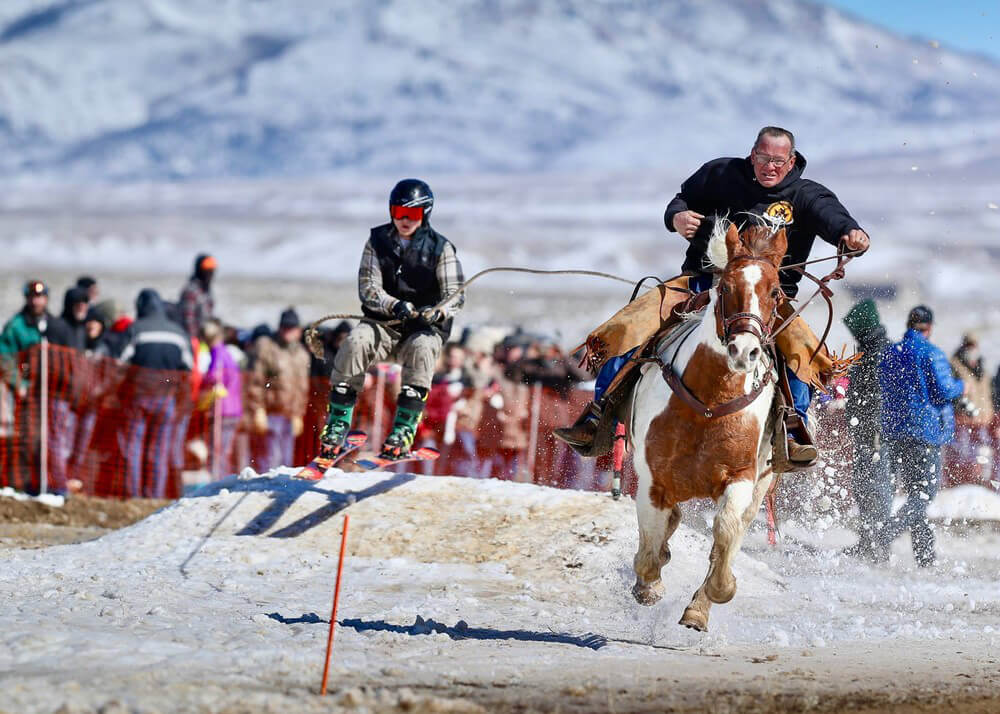
- Skijoring. Skijoring is a Wyoming winter mainstay, especially in Saratoga, Sheridan and Pinedale.
- Outdoor Festivals. Outdoor Festivals like theWinter Fest in Rawlins, Winter Carnival in Pinedale, Winter Festival in Sundance and Ice Festival in Cody draw thousands of visitors annually.
- Fishing Competitions. In Wyoming, ice fishing keeps the sport alive when temperatures plunge, especially in Rock Springs, Saratoga and Kemmerer.
Wyoming Winter: What to Plan For
Planning is key to any successful getaway, and that’s even more important when the temperatures drop and the snowflakes fly. Once you’ve decided on the events you’d like to enjoy while visiting Wyoming this winter, you will want to be mindful of the weather, from overall temperatures to road conditions and other considerations that may impact your trip. Additionally, knowing what to pack to brave the climate is essential, as well as understanding how to make your best winter vacation yet responsible and sustainable.
Wyoming Winter Temperatures
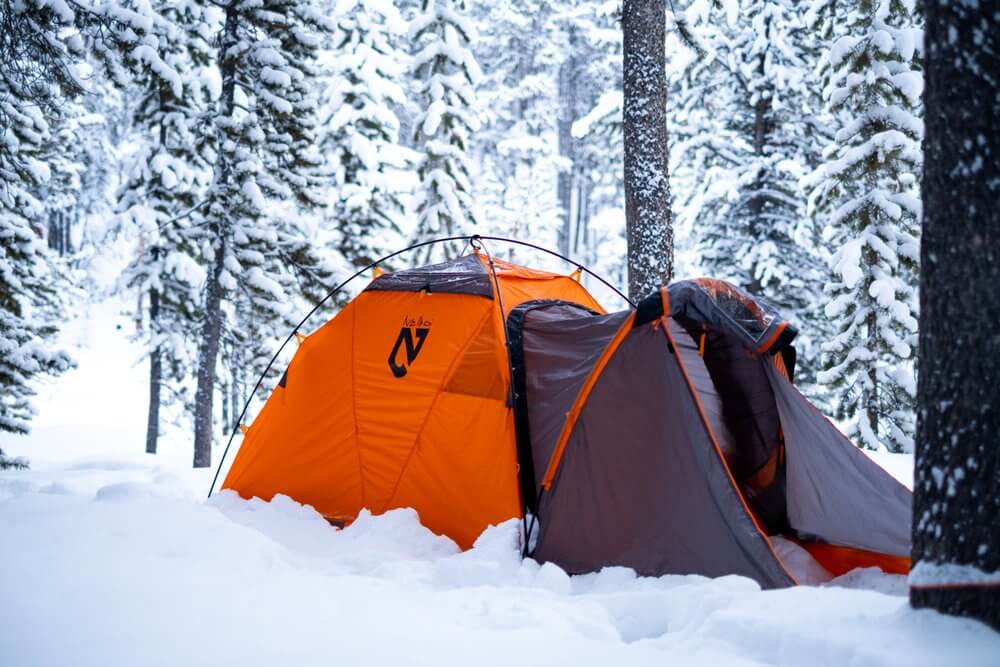
While many factors play a role in Wyoming winter temperatures year to year, you can expect to find chilly air as early as September in some areas of the state, with its coldest temperatures occurring between September and May.
The Cowboy State’s coldest month is typically January, where daily highs only climb as high as the 30s and lows can easily dip into the single digits (and sometimes negative numbers.) It’s important to note that elevation plays a role in temperature — mountain ranges are often warmer than valleys in the wintertime as cold air tends to collect there.
Additionally, Wyoming winter temperatures are known to fluctuate, providing the opportunity for warmer waves and milder air temperatures throughout the state. During your stay, you can check current weather conditions via the National Weather Service online or through the Water Resources Data System & State Climate Office’s website.
Getting Around in the Winter
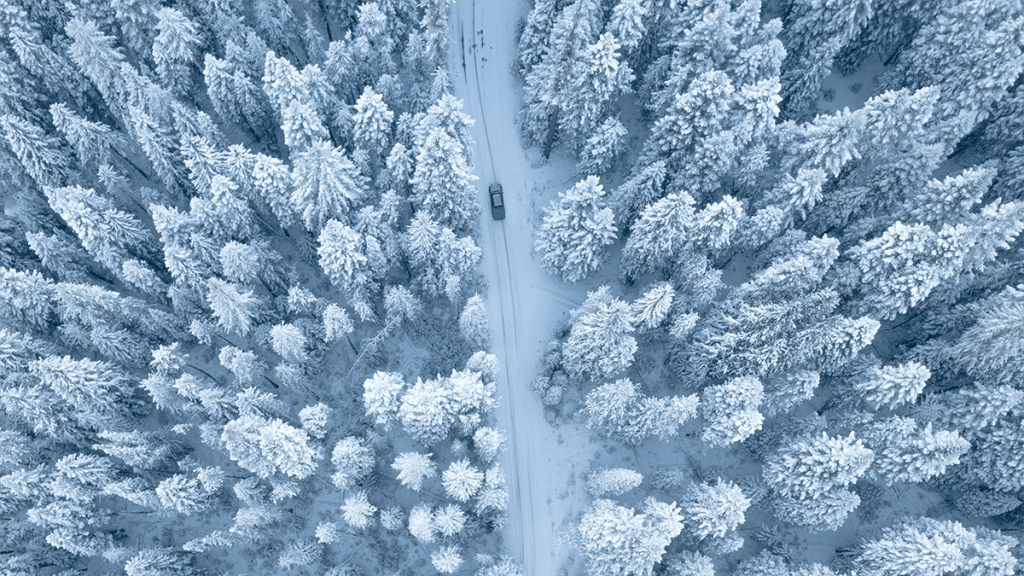
It’s no surprise that dropping temperatures often bring falling snow with them, but Wyoming’s changing altitudes make prepping for navigating snow and ice-covered roads a little more complicated. In addition to higher elevations often seeing more accumulation than lower ones, there is also an issue of high winds moving fallen snow and creating blizzard-like visibility and large snow deposits on the road.
Treacherous highways and the risk of avalanches mean some outdoor facilities are shut down during cold weather months, and road closures are necessary to check before you head out on your Wyoming adventure.
Here’s a checklist to help ensure your getaway is as safe as it is fun.
Take note of available facilities
While Wyoming is a hub for outdoor experiences and a top family vacation spot (even when the temperature drops), only some things remain open all season long. You may be able to find camping accommodations in the colder months, but they may not be as plentiful as they are in season and may not allow for reservations.
If you plan a campout between November and April, check the area you want to stay in before your trip.
Be aware of road closures
Several Wyoming roads that may be especially dangerous during ice and snow storms close preemptively. A few examples are:
- Signal Mountain Summit Road – November-mid-May
- Teton Park Road – November-April
- Wyoming 390 (Moose-Wilson Road) – November-mid-May
- Yellowstone National Park (Most roads) – mid-December-mid-March
Pro tip: While some national park roads are closed to public driving, some are available for snowcoaches or snowmobiling. Additionally, routes without scheduled closures may close unexpectedly in inclement weather, including Interstates 20, 80, 90 and more. Be sure to check the Wyoming Department of Transportation for real-time road closure updates during your stay.
Keep your car stocked
If you’re planning a road trip through Wyoming or just looking to take a scenic drive in the winter months, make sure your vehicle is fully prepared in an emergency.
Here are a few things to fill your trunk:
- Extra clothes, sleeping bags or blankets
- Bottled water and shelf-stable, grabbable snacks
- Medication, hygiene products and a first aid kit
- Battery cables, a tow chain and other tools in case of a vehicle breakdown
- Batteries, a flashlight and a cell phone charger
Be mindful of icy conditions
When Wyoming winter temperatures drop, ice can impact all forms of travel throughout the state, whether or not you participate in outdoor activities. Here are some tips for traversing slippery winter surfaces as safely as possible:
- While driving the roadways in Wyoming, practice winter safety measures. Allow at least a car length between yourself and the vehicle ahead of you, drive slowly in storms or frigid temperatures where ice will likely form, and allow plenty of time to press the gas or brakes gently. Ensure your lights and windshield are clear to increase visibility for you and other drivers.
While exploring the outdoors on foot, remember that heavy snowfall will often envelop the surface it falls on, causing ice to form a layer more slowly.
If you plan to ice fish, look for at least four inches of ice on the water before you stand on it. If driving a motor vehicle onto the ice, it must be much thicker, ranging from five inches for a snowmobile to 15 for a medium-sized truck. Do not fish in parts of lakes or rivers with natural currents, as that ice is likely to be unstable.
- The fresher the ice is, the less chance it has had to deteriorate, making it stronger than ice that formed before it.
- Know that no ice is truly “safe,” and be extremely cautious when encountering it.
Practice avalanche safety precautions
From outdoor sports to getting from one attraction to another, traveling through the mountain ranges across Wyoming means keeping a close eye on avalanche risk. Here are some pointers to stay safe while having your best winter vacation yet:
- Rely on your eyes. While avalanches seem to happen quickly, the truth is that there are signs in the snow itself that can help you determine whether or not you’re in a safe spot. Avalanches are likely to occur after heavy snowfall, and more so when a weather warm up follows it, as the snow piles on inclines can become unstable and begin to drift. Take a closer look at how the snow is packed around you — if there are holes, cracks or areas where piles have collapsed, you may be at higher risk of avalanche. Additionally, if it looks like an avalanche has already taken place in an area, it may happen again.
- Don’t go it alone. A large part of avalanche safety is understanding where one is likely to occur in the terrain. A slope of 30 to 50 degrees is steep enough to make an avalanche possible, but it can also happen at steeper inclines or places where the wind has drifted additional snow on top of what has fallen. Your best bet? Travel in groups where one person crosses these areas at a time, ensuring someone else will be there to assist if an avalanche strikes. Additionally, the help of a local guide may be helpful, as there are sure to be spots they know how to safely navigate (and ones to avoid).
- Keep safety gear with you. Consider purchasing avalanche safety gear before or during your trip. These items can be found at your local outdoor or sporting goods store and often include a transceiver that produces a radio signal if you are trapped under snow, a probe for measuring snow and indicating position if you become buried, a shovel and a snow saw.
- Pay attention to avalanche risks. In areas where avalanches are common, they are forecast like the weather. In Wyoming, The Bridger Teton Avalanche Center is an excellent resource for this data on a day-to-day basis, helping you pick times to enjoy the outdoors and minimize your risk.
What to Wear
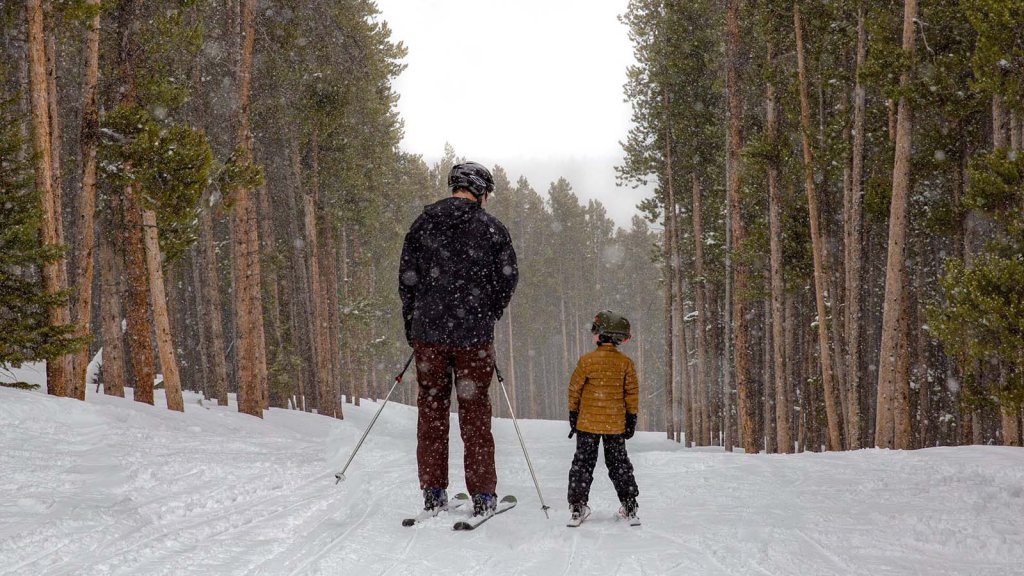
It’s often said that form follows function, and that is all the more true when it comes to winter travel outfits. Picking out what to pack does hinge on what you’d like to do while exploring Wyoming in winter, but there are some baseline considerations to make while loading up your suitcase.
Winter Travel Outfits to Wear in Wyoming
- Jeans, flannels and rain boots – For milder temperatures or indoor activities, you can’t go wrong with a pair of jeans, a cozy flannel, and some rain or waterproof boots that are lighter weight and allow for full range of motion.
- Sweaters, fleece and a chunky knit scarf – When in and out of the crisp mountain air, aim to include midweight pieces that you can layer for extra heat or remove if you feel too warm.
- Thick winter coat, hat and snow boots – Dressing for the winter elements comes down to two things: thickness and weather-proofing. Consider a parka made of down or high-quality down alternative and a knit beanie or a trapper hat to keep your head and ears cozy. Warm, waterproof snow boots are a must-have, ideally with rubber soles for extra grip on ice and snow.
- Outdoor sports gear – While not always flashy or fashionable, ensuring you have the duds to withstand the cold while snowboarding, skiing or snowmobiling is critical to staying safe and comfortable. In addition to the winter travel outfits you’ve packed for fun off the mountainside, don’t forget an insulated ski suit, bib-style snowboarding or snowmobiling pants, and gloves that are waterproof and well-insulated.
- Little layers – While complete outfits are essential, don’t forget the smaller things that can keep you comfortable and cozy on your trip. Think tall, wool-blend boot socks and thermal tops and pants for layering under bulky outerwear. Don’t forget sunglasses or ski goggles to protect your eyes from sun and wind in snowy weather.
Enjoy Wyoming in Winter Responsibly
A visit to Wyoming is one of the best winter vacations in the US, and making the most of your trip means doing your part to enjoy it responsibly. Respect for land and wildlife, utilizing proper safety measures and planning ahead all ensure that you and your family take full advantage of all the Cowboy State has to offer. Be sure to check out our Know Before You Go page for more helpful information, and start planning your perfect winter getaway.